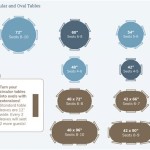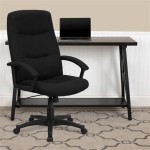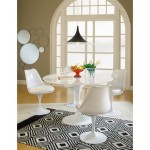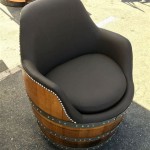The Ergonomic Advantage: Exploring Desk Chairs with Adjustable Height and No Wheels
The modern office landscape is increasingly prioritizing employee well-being and productivity. A cornerstone of this approach is the provision of ergonomic furniture, particularly desk chairs. Among the various types available, desk chairs with adjustable height and without wheels are gaining popularity. These chairs offer a specific set of benefits tailored to specific work styles and environments, emphasizing stability and precise postural control.
Unlike their wheeled counterparts, desk chairs without wheels, sometimes referred to as stationary chairs, provide a firm and stable base. This stability is particularly useful for tasks requiring fine motor skills, detailed work, or prolonged periods of focused concentration. The adjustable height feature further enhances the ergonomic value, allowing users to customize the chair to their individual body proportions and desk height. This precise adjustment minimizes strain and promotes a healthier posture.
The absence of wheels can also be advantageous in situations where uncontrolled movement is undesirable. Certain work environments, such as laboratories, art studios, or therapy settings, require precise positioning and minimize distractions. The added stability of a stationary chair prevents accidental rolling, contributing to a safer and more efficient workspace.
Key Point 1: Understanding the Ergonomics of Adjustable Height
The primary benefit of an adjustable height desk chair lies in its ability to accommodate a diverse range of body sizes and shapes. Incorrect chair height can lead to a multitude of musculoskeletal problems, including back pain, neck pain, and carpal tunnel syndrome. When a chair is too low, the user may hunch forward, causing strain on the lower back and neck. Conversely, a chair that is too high can force the user to elevate their shoulders, leading to tension in the upper back and neck.
Adjustable height mechanisms typically involve a gas lift cylinder, allowing for smooth and effortless height adjustments. The optimal height is achieved when the user's feet are flat on the floor or supported by a footrest, with knees bent at a 90-degree angle. The thighs should be parallel to the floor, and the hips should be slightly higher than the knees. This posture promotes proper spinal alignment and reduces pressure on the lower back.
Furthermore, the adjustable height feature must be considered in relation to the desk height. The goal is to position the user so that their elbows are bent at a 90-degree angle when typing or using a mouse. This minimizes strain on the wrists and forearms. If the desk is too high and not adjustable, raising the chair height to compensate will likely lead to elevated shoulders and discomfort. In such cases, an adjustable desk or keyboard tray may be necessary to achieve optimal ergonomics.
When selecting an adjustable height desk chair, it is crucial to consider the range of adjustment. The chair should be able to accommodate both the shortest and tallest users in the workspace. Testing the adjustment mechanism to ensure smooth and reliable operation is also essential. A chair with a poorly designed or malfunctioning adjustment mechanism will likely be underutilized or even lead to further discomfort.
Beyond height, other adjustable features can further enhance the ergonomic benefits. Adjustable lumbar support is crucial for maintaining the natural curvature of the spine and preventing lower back pain. Adjustable armrests, both in height and width, allow the user to support their forearms and shoulders, reducing tension in the upper body. The seat depth adjustment allows the user to customize the depth of the seat to accommodate different leg lengths, ensuring proper thigh support.
Key Point 2: Advantages of No Wheels: Stability and Focus
Desk chairs without wheels provide a level of stability that wheeled chairs cannot match. This stability can be particularly beneficial in tasks requiring precision and focus. Architects, artists, surgeons, and other professionals who perform delicate work often prefer stationary chairs because they prevent accidental movement and maintain a consistent working position.
The absence of wheels also minimizes distractions. In a busy office environment, the subtle movements of wheeled chairs can be disruptive to both the user and their colleagues. Stationary chairs eliminate this source of distraction, allowing for greater concentration and productivity. This is especially important for individuals with attention deficit disorders or those who are easily distracted.
Another advantage of no wheels is the reduction in rolling-related accidents. Wheeled chairs can pose a tripping hazard, especially in confined spaces or when multiple people are moving around. Stationary chairs eliminate this risk, creating a safer work environment. This is particularly important in environments with heavy foot traffic or where workers are carrying equipment or materials.
The stability of a stationary chair can also promote better posture. Users are less likely to fidget or slouch when seated in a chair that provides a firm and stable base. This encourages a more upright posture, reducing strain on the spine and improving overall comfort. Moreover, the lack of movement can encourage the user to engage their core muscles to maintain proper posture, contributing to improved core strength and stability over time.
However, it is important to acknowledge that stationary chairs may not be suitable for all work environments. In situations where frequent movement between different workstations is required, wheeled chairs may be more efficient. Deciding between wheeled and stationary chairs requires a careful assessment of the specific needs of the workspace and the tasks performed by the users.
Key Point 3: Considerations for Material and Design in Static Chairs
The material and design of a desk chair without wheels significantly impact its comfort, durability, and aesthetic appeal. The seat and backrest materials should be breathable and supportive, minimizing pressure points and promoting air circulation. Mesh, fabric, and leather are common choices, each with its own set of advantages and disadvantages.
Mesh backrests are highly breathable, allowing for excellent air circulation and preventing overheating. They are also lightweight and easy to clean. However, mesh backrests may not provide as much support as other materials, and some users may find them uncomfortable to sit on for extended periods.
Fabric seat and backrests offer a comfortable and supportive feel. They are available in a wide variety of colors and textures, allowing for greater customization. However, fabric can be more difficult to clean than mesh or leather, and it may retain odors and stains.
Leather seat and backrests provide a luxurious and durable option. They are easy to clean and maintain, and they can add a touch of sophistication to any workspace. However, leather can be more expensive than other materials, and it may not be as breathable as mesh or fabric, leading to discomfort in hot weather.
The frame of the chair should be sturdy and durable, capable of withstanding daily use. Steel and aluminum are common choices for chair frames, offering excellent strength and stability. The base of the chair should be wide and stable, preventing tipping or wobbling. Rubber or plastic feet can be added to the base to protect flooring from scratches and to provide additional grip.
The overall design of the chair should be ergonomic and aesthetically pleasing. The seat should be contoured to fit the user's body, providing support and comfort. The backrest should be curved to support the natural curvature of the spine. The armrests, if included, should be positioned at a comfortable height and width. The chair should blend in with the overall decor of the workspace, creating a harmonious and inviting environment.
In addition to material and design, the weight capacity of the chair should also be considered. The chair should be able to safely support the weight of the intended user. Exceeding the weight capacity can lead to damage to the chair and potential injury to the user. Furthermore, the chair should meet relevant safety standards and certifications, ensuring that it has been tested and proven to be safe and reliable.
Choosing the right desk chair, whether with wheels or without, and with adjustable height, requires careful consideration of individual needs, work environment, and budget. Prioritizing ergonomics and comfort is crucial for promoting employee well-being and maximizing productivity.

Vecelo Office Desk Chair No Wheels Comfy Wide Fabric Padded Modern Swivel And Height Adjustable Armless Task Gray Thd Oc14 Gry

Leather Padded Height Adjustable Wide Seat Ergonomic Armless Office Desk Chair No Wheels In Beige

Polibi High Grade Pu Leather Back No Wheels Swivel Ergonomic Office Chair In Black With Adjustable Height Rs Whgmas Pbk

Edx Armless Pu Leather Office Chair Criss Cross Legged No Wheels Comfy Home Desk Chairs Brown

Office Desk Chair No Wheels Comfy Wide Fabric Padded Modern Swivel And Height Adjustable Armless Task Beige

Vitesse Armless Office Desk Chair No Wheels Fabric Padded Modern Swivel Vanity Height Adjustable Wide Seat Computer Task For Home

Office Chair Armless Criss Cross Legged No Wheels Comfy Home Desk Chairs Adjustable Swivel Padded Fabric Vanity Task Computer

Polibi High Grade Pu Leather Back No Wheels Swivel Ergonomic Office Chair In Black With Adjustable Height Rs Whgmas Pbk

Armless Office Desk Chair No Wheels Atlantic Fine Furniture Inc

Luckwind Armless Home Office Desk Chair No Wheels Modern Double Padded Ergonomic Vanity Mid Back Height Adjustable Cushioned Swivel Task Chairs Wide Seat Light Grey Newegg Com








